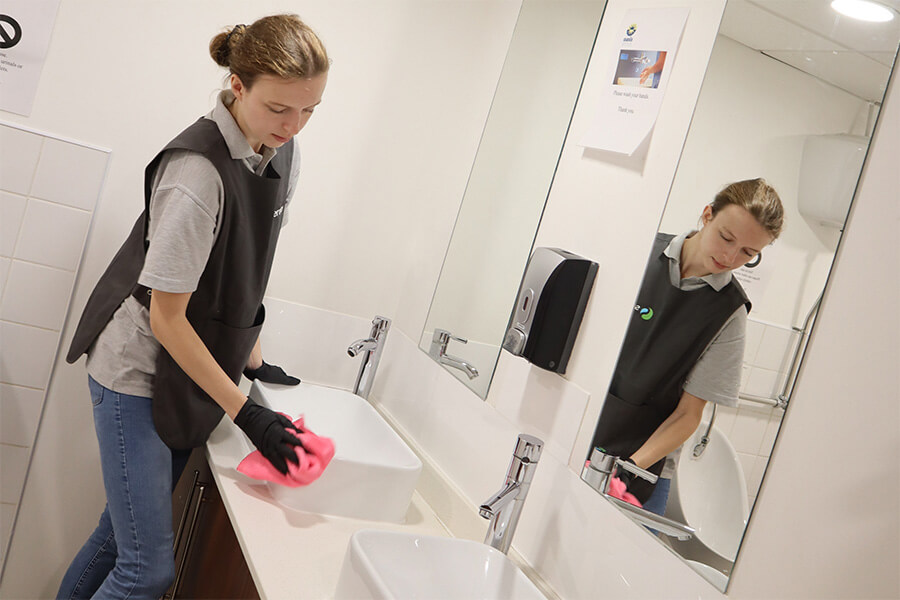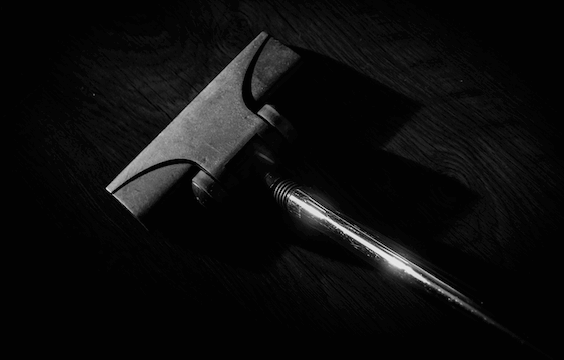Yes, poor cleaning services in an office can directly lead to increased illness among employees by allowing bacteria, viruses and allergens to accumulate and spread.
In a shared workspace, several people come into contact with the same surfaces every day. Keyboards, door handles, kitchen counters and even lift buttons become silent carriers of germs if not properly cleaned. When cleaning services are inconsistent, superficial or poorly managed, the office environment can quickly become a hotspot for illness, resulting in more sick days, reduced productivity and a demoralised workforce.
Do Germs Linger Longer Than You Might Think?
One of the biggest misconceptions about office hygiene is the belief that dirt and illness are always visible. In reality, many harmful pathogens are invisible to the naked eye and can survive on surfaces for hours or even days.
A study conducted by the University of Arizona found that a virus placed on a single doorknob or table surface could be detected on 40 to 60 per cent of workers’ hands and commonly touched objects within just two to four hours. Without effective cleaning, those germs continue to circulate, increasing the chances of outbreaks within the workplace.
Another report by the British Cleaning Council stated that inadequate workplace hygiene contributes to an estimated 30 million sick days each year across the UK. These absences impact not only the individuals affected but also the teams they work in, creating additional pressure and disruptions to workflow.

Where Are The Hidden Hotspots?
Not all office areas are cleaned with equal attention, and this is where problems often start. Poorly trained or rushed cleaners may focus on visible mess, leaving high-risk areas untouched. These “germ hotspots” include:
- Shared kitchen appliances such as microwaves, kettles and fridge handles.
- Telephones and computer peripherals e.g. keyboard, mouse, printer and scanner.
- Bathroom taps and flush handles.
- Meeting room tables and shared stationery.
- Lift buttons and handrails.
Even desks, which many people mistakenly think of as personal spaces, can harbour high levels of bacteria. One study found that the average office desk has 400 times more bacteria than a toilet seat, a statistic that underlines the importance of regular disinfection, not just tidying.
Why Do Cleaning Standards Matter?
The quality of cleaning matters just as much as frequency. A quick vacuum and bin emptying are no longer sufficient in the modern office. Professional cleaning services should include proper sanitisation protocols, use of effective disinfectants and targeted cleaning of high-touch areas. When these standards are not met, it leaves a false sense of cleanliness that can increase risk.
Inadequate cleaning is often the result of cost-cutting or poor oversight. Businesses sometimes hire the cheapest provider, assuming all cleaners offer the same service, or they rely on staff to keep things clean informally. But professional cleaning involves training, planning and attention to detail. Without it, even daily cleaning can fail to keep illness at bay.
What Is The Impact Of Illness On Staff And Business?
Increased illness in the workplace has multiple knock-on effects. First and foremost, it affects staff health, with people falling ill more frequently or taking longer to recover due to repeated exposure to the same environment.
Furthermore, the consequences do not stop there. Frequent absenteeism leads to:
- Reduced productivity.
- Project delays.
- Increased workload for healthy staff.
- Lower morale.
- A higher risk of burnout.
When employees regularly find themselves unwell after being at work, trust in the organisation’s duty of care also diminishes. This can affect staff retention and recruitment, particularly as hygiene has become a central concern in the post-Covid workplace.
What Can Employers Do?
Improving cleaning standards starts with recognising that cleaning is not a background task, it is a business-critical function. Employers should:
- Review their current cleaning contracts and services to ensure that they meet the needs of the office space, staff size and layout.
- Audit the most frequently used areas to identify potential hygiene gaps.
- Communicate with employees about shared responsibility, such as wiping down desks or equipment.
- Invest in professional cleaning providers who follow industry standards and offer trained, reliable staff.
- Ensure visibility of cleaning efforts, such as cleaning logs or cleaners on site during the day, to reassure employees that hygiene is being prioritised.

The Bottom Line
Poor cleaning services do not just affect how an office looks but they impact how it functions, how safe it is and how healthy its people are. Germs can spread rapidly in poorly maintained environments and the cost to businesses through staff sickness is significant.
With millions of workdays lost each year to preventable illness, businesses can no longer afford to treat cleaning as a low priority. Good hygiene is a necessity for a healthy and productive workplace.

